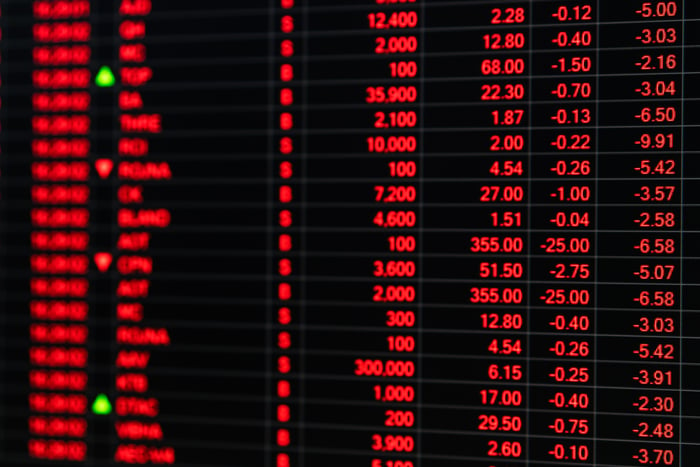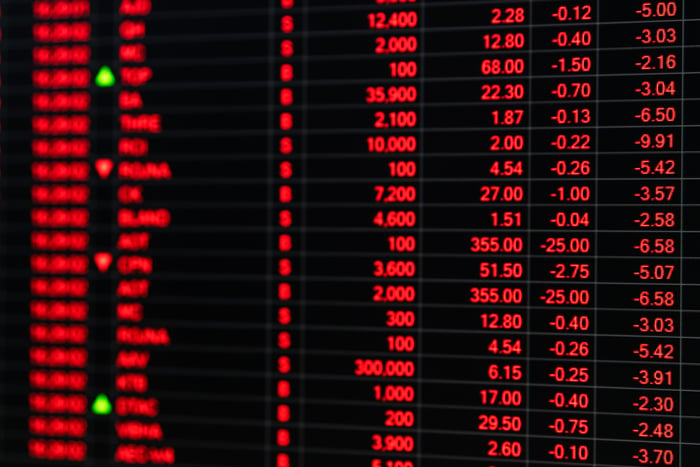The plunge highlights high levels of leverage by crypto investors.
Cryptocurrency prices slumped Sept. 22 with Ethereum (ETH 0.01%) losing 9% in the early hours of Monday morning. The second-biggest cryptocurrency fell from almost $4,500 to $4,075, before finishing the day at $4,200. Bitcoin (BTC 1.56%) dropped 3% and the total crypto market cap slipped back below $4 trillion.
Crypto positions saw more than $1.6 billion in liquidations in 24 hours — the biggest liquidation this year, according to CoinGlass data. Ethereum was hardest hit with more than $500 million wiped out. It’s a reminder of the way excessive leverage in crypto can quickly snowball. The market moved against investors who had borrowed to fund bullish positions. As it did, their positions were forcibly closed, which added to the broader downward pressure.
Let’s dive in to find out what the rocky start to the week means for crypto investors.
What investors need to know about the sell-off
When cryptocurrency prices are rising, it’s often easy to forget about the risk involved. Dramatic shifts and liquidations remind us that this is still a relatively new and evolving asset class.
1. Cryptocurrency volatility hasn’t gone away
Bitcoin is still a volatile asset. That volatility has lessened as it has gained traction as a store of value and attracted institutional investment, particularly through exchange-traded funds (ETFs). According to Fidelity, Bitcoin was less volatile than shares of Netflix in the two years running up to March 2024. However, the volatility is still there.
This is even more so for Ethereum, which serves a different purpose than Bitcoin and has not yet benefited from the same inflows of corporate and institutional capital. Ethereum is starting to be viewed as the smart contract workhorse of crypto, supporting a wealth of stablecoin and decentralized finance applications. However, it is still more volatile than Bitcoin as this week’s dramatic price swing demonstrates.
2. Keep an eye on crypto leverage
Investing using margin and leverage involves using borrowed funds to take a larger position in an investment. It can work in different ways, but for many crypto investors, it involves depositing assets as collateral to increase purchasing power. As an investor, it can be risky because you could lose your collateral — known as liquidation — if the market doesn’t rise or falls.
On a broader level, leverage amplifies market activity. That’s why it’s concerning that the levels of crypto leverage are coming close to those of Q4 2021 and Q1 2022. An August Galaxy report showed that total crypto-collateralized lending increased to more than $53 billion in the second quarter of 2025. That’s a 27% increase from on the quarter before.
In 2022, we saw the way that excessive leverage can quickly spiral and exacerbate market volatility. Markets are cyclical by nature, and history shows us that cryptocurrency bull runs don’t last forever. When prices start to fall, as they did at the start of the week, those declines are magnified by the various forms of buying crypto using borrowed money.
There’s also growing concern about crypto corporate treasury companies, some of which are using debt to fund their Bitcoin and Ethereum purchases. Adding crypto to company balance sheets using borrowed money has become popular this year. The danger is that when prices fall, they may need to sell their crypto to service debts, causing prices to fall further.

Image source: Getty Images.
3. Bitcoin and Ethereum are still trending upward
Dramatic price swings are always unsettling, but it’s important to keep them in context. Bear in mind that both Bitcoin and Ethereum are still outperforming the S&P 500 — in spite of the recent sell off. As of Sept. 24, the S&P 500 has gained about 16% year over year. Bitcoin is up almost 77% and Ethereum increased 57% in the same time period.
Prepare for further turbulence
Crypto prices seem to have stabilized today, with Bitcoin holding its head over the $113,000 mark and Ethereum at almost $4,200. However, Bloomberg warns that the market is braced for further volatility. It says Bitcoin options traders are betting on two extremes — a slide to $95,000 or a rally to over $140,000, showing that we may yet see more dramatic price swings.
Bitcoin and Ethereum have rallied this year, buoyed by a crypto-friendly administration, changes in regulation, and — most recently — hopes for Federal Reserve interest rate cuts. Potential Securities and Exchange Commission approvals of spot altcoin ETFs may also give the industry a boost in the coming months. Even so, economic doubts and inflation concerns continue to weigh on prices. If further rate cuts do not materialize as anticipated, crypto prices may not be able to sustain recent gains.
As a long-term investor, one way to manage volatility is to use dollar-cost averaging, buying a set amount of crypto at regular intervals rather than in a lump sum. It’s also important that crypto only make up a small amount of your portfolio, and that you set clear goals to avoid making panic investment decisions.



